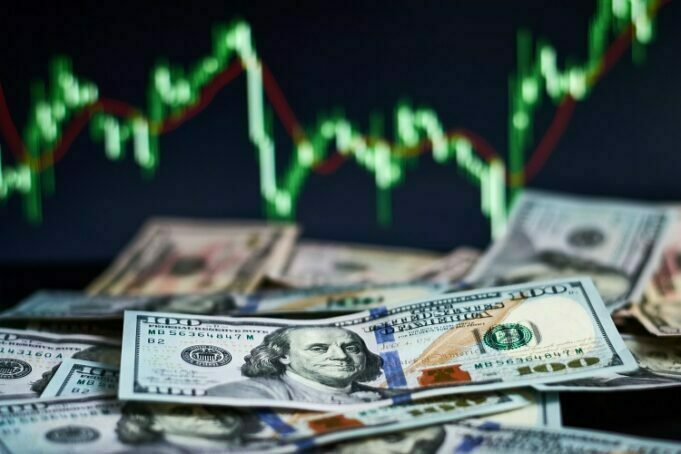Forex trading can be a great way to make money, but it can also be a great way to lose money if you don’t know what you’re doing.
One of the most important things to consider when trading forex is your lot size. The lot size is the amount of money you’re willing to risk on each trade. This can have a massive impact on forex liquidity.
Here are 12 ways to ensure you are choosing the right lot size in forex trading:
Table of Contents
1. Know Your Risk Tolerance
This is the most important factor in determining your lot size. You need to know how much risk you’re comfortable taking before you can determine your lot size.
If you are a risk-averse trader, you may want to trade a smaller lot size to limit your risk. Conversely, if you are a risk-tolerant trader, you may be willing to trade a larger lot size to increase your potential reward.
2. Consider Your Account Size
Your account size will also play a role in determining your lot size. If you have a smaller account, you’ll need to trade smaller lot sizes to avoid blowing up your account.
For example, if you have $10,000 in your account, you can trade a standard lot which is 100,000 units of currency.
3. Use a Risk-Reward Ratio
A risk-reward ratio is a tool that can help you determine your lot size. It’s simply the amount of money you’re willing to risk divided by the amount of money you’re aiming to make on the trade.
For example, if you’re willing to risk $100 to make $200, your risk-reward ratio would be 1:2.
4. Use a Stop-Loss
A stop-loss is an order that you enter into your trading platform to automatically sell your position when it reaches a certain price. This price is usually below the price you bought the position at.
When determining your lot size, you need to consider the placement of your stop-loss. If you are using a tight stop-loss, you will need to trade a smaller lot size to limit your risk. Conversely, if you are using a wider stop-loss, you can trade a larger lot size.
Having a stop-loss in place will help you to limit your losses when the market moves against you.
5. Use a Take-Profit
A take-profit is an order that you enter into your trading platform to automatically sell your position when it reaches a certain price. This price is usually above the price you bought the position at.
If your take-profit is close to your entry price, you will need to trade a small lot size. If your take-profit is further away from your entry price, you can trade a larger lot size.
Having a take-profit in place will help you to lock in your profits if the market moves in your favour.
6. Consider the Volatility of the Market
The volatility of the market is another important factor to consider when determining your lot size. If the market is particularly volatile, you’ll need to trade smaller lot sizes to avoid getting burned.
Conversely, if the market is relatively calm, you can trade a larger lot size.
7. Use a Demo Account
If you’re new to forex trading, it’s a good idea to practice with a demo account before putting real money on the line. This will allow you to get a feel for the market and to test out your lot size without risking any real money.
8. Use a Micro Lot
A micro lot is the smallest lot size that you can trade in forex. It’s equivalent to 1,000 units of the currency you’re trading.
Using a micro lot is a good way to get started when you’re new to forex trading. It will allow you to get a feel for the market without risking too much money.
9. Use a Mini Lot
A mini lot is a slightly larger lot size than a micro lot. It’s equivalent to 10,000 units of the currency you’re trading.
Using a mini lot is a good way to trade if you’re comfortable with the risks involved. It will allow you to make more money when the market moves in your favour, but you can also lose more money when the market moves against you.
10. Use a Standard Lot
A standard lot is the largest lot size that you can trade in forex. It’s equivalent to 100,000 units of the currency you’re trading.
Using a standard lot is a good way to trade when you’re an experienced trader and you’re comfortable with the risks involved. It will allow you to make a lot of money when the market moves in your favour, but you can also lose a lot of money when the market moves against you.
11. What is Your Desired Level of Return?
Your desired level of return is another important factor to consider when choosing a lot size. If you are looking for a small return, you can trade a small lot size. If you are looking for a large return, you will need to trade a larger lot size.
12. What is Your Time Frame?
Your time frame is the final factor to consider when choosing a lot size. If you are a day trader, you will need to trade a smaller lot size. If you are a swing trader or a position trader, you can trade a larger lot size.
Choosing the right lot size in forex trading is a critical decision. There are a number of factors you need to consider in order to choose the right lot size for your trading strategy.
By taking the time to consider all of these factors, you can ensure that you are choosing the best lot size for your trading needs. Get detailed information about different terms and regulations of forex trading and its market, on this website: https://newshub4.com/




